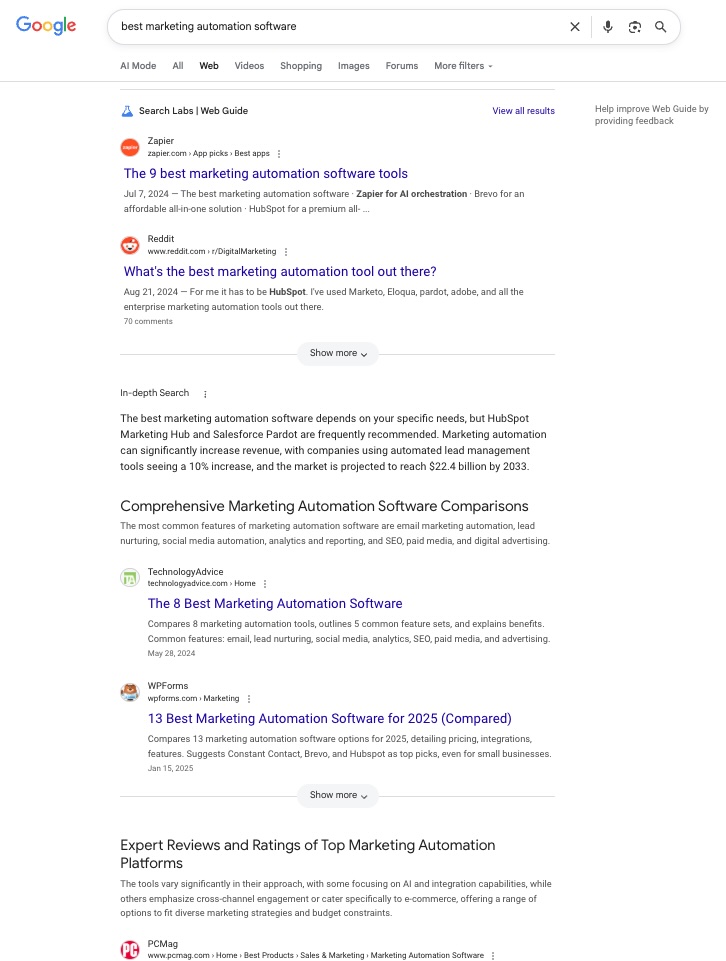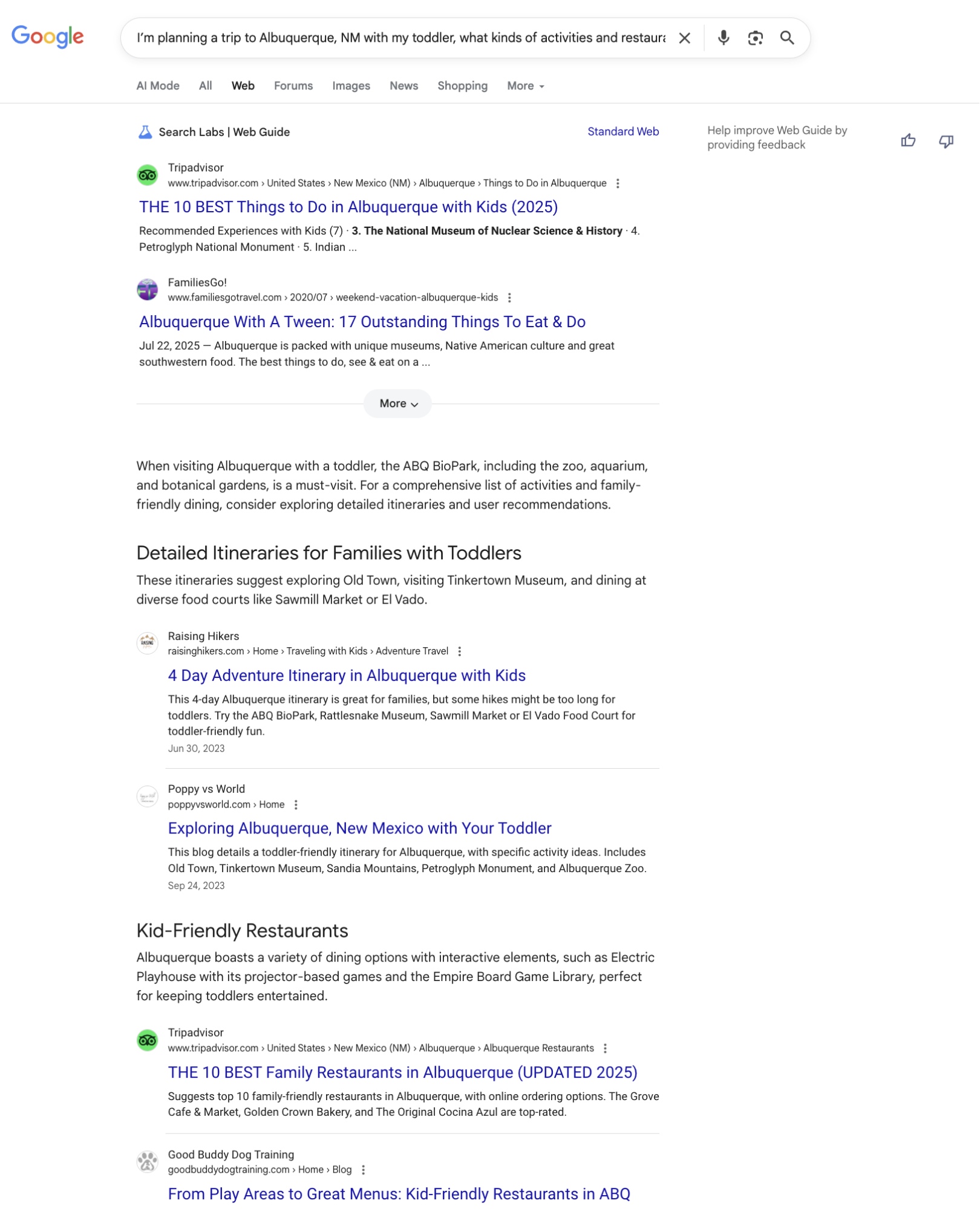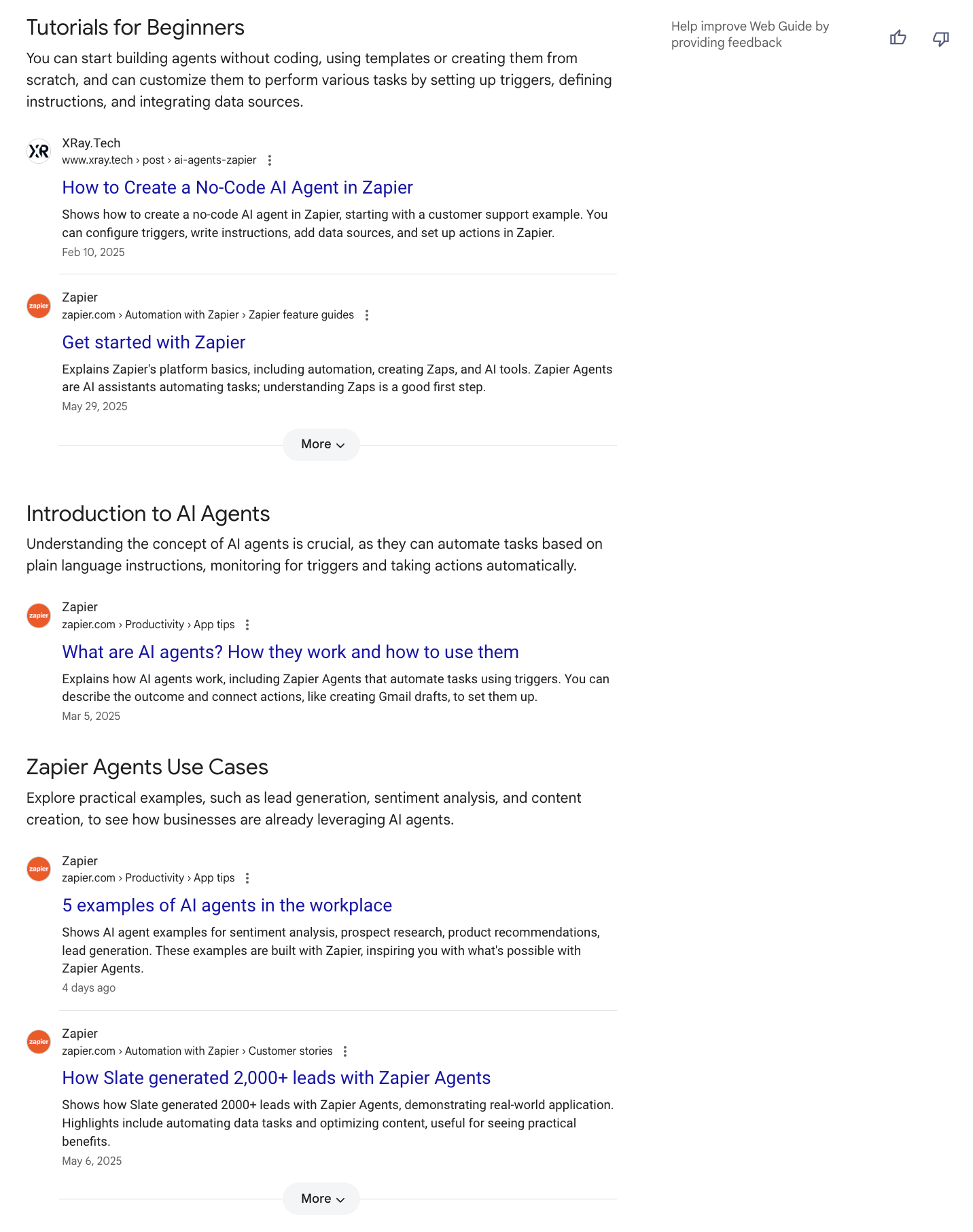Google AI mode pushed human-made content way down, but the newest iteration—Google Web Guide—changes things up. It feels a little like a step back toward traditional search, but with a healthy dose of AI curation.
Web Guide once again reimagines how people will interact with Google Search, shifting it from a static list of links to a more guided and curated experience. But the direction seems to be rebalancing the role of human-created content in search. By surfacing curated paths, contextual information, and richer connections between results, Web Guide positions high-quality, human-written content as essential to guiding users through the web.
For marketers, this is a signal. Web Guide is reframing the relationship between AI and original work, showcasing that human insight is still core to discovery and trust in search. Whether it’s going to zag back in the other direction in a matter of weeks, who’s to say—but it’s interesting to see how these tools are constantly evolving.
Table of contents:
What is Google Web Guide?
Google Web Guide is a new search mode in Google that uses AI to organize the search engine results page (SERP), making it easier for users to find relevant information and web pages.

It’s backed by a custom version of Gemini, and it organizes web links to address different aspects of your query. For example, it might showcase “comprehensive guides,” “forum discussions,” or “personal experience and tips,” depending on the query.
It’s really tailored to the query, so when I searched, “I’m planning a trip to Albuquerque, NM with my toddler, what kinds of activities and restaurants should we add to our itinerary?” it gave me themes of “Detailed Itineraries for Families with Toddlers” and “Kid-Friendly Restaurants.” Then it continued with reviews, official tourism resources, activities, and forum discussions. The first AI-generated summary section offers “must visit” recommendations to kick things off, then I can get more granular with suggestions as I scroll the page.

It also puts human-written content first, adding an AI summary only below the first couple of links.
How to activate Google Web Guide
Google Web Guide is currently a Search Labs experiment that you need to enable. You may be prompted to join the waitlist, but in my experience, the wait wasn’t longer than a day.

Once you opt in, you can switch between Google Web Guide and the existing Google Search environment (labeled All) on the regular Search page.

How does Google Web Guide work?
Similar to AI Mode, Google Web Guide uses a query fan-out technique. This means that it’s making multiple related searches at once to address diverse user intents.
Described as a thematic search system, Web Guide organizes results into categories (“themes”) with a short summary for each listed theme. Under the theme headers, you see a couple links, and there are summaries of those links too. The summaries use contextual information (title, publisher, metadata, etc.) as well as passages from the content.
The goal, it seems, is to help users understand how results are relevant to their search queries before clicking through (if they do at all).

The main change, though, is clustering search results by theme instead of rankings. In my early experiments, and those of Zapier team members, it appears to prioritize human-made content, which comes above AI answers.

It’s somewhere between traditional search, AI deep research, and an AI search engine like Perplexity.
How will Google Web Guide change the way people search?
It’s too soon to make any definite predictions: Web Guide might be deprecated before you even read this. Anyone who claims to fully understand this space probably shouldn’t be trusted—there’s not enough available data, and the rules change at an unprecedented rate.
Marketers should pay attention and start focusing on generative engine optimization (GEO), not just search engine optimization (SEO). But we also need to keep our fingers on the pulse because things are changing fast. The tools available are changing every day (see: AI Overviews → AI Mode → Web Guide), and how people interact with those tools is going to continue to evolve. Our strategies need to evolve alongside that.
Related reading: